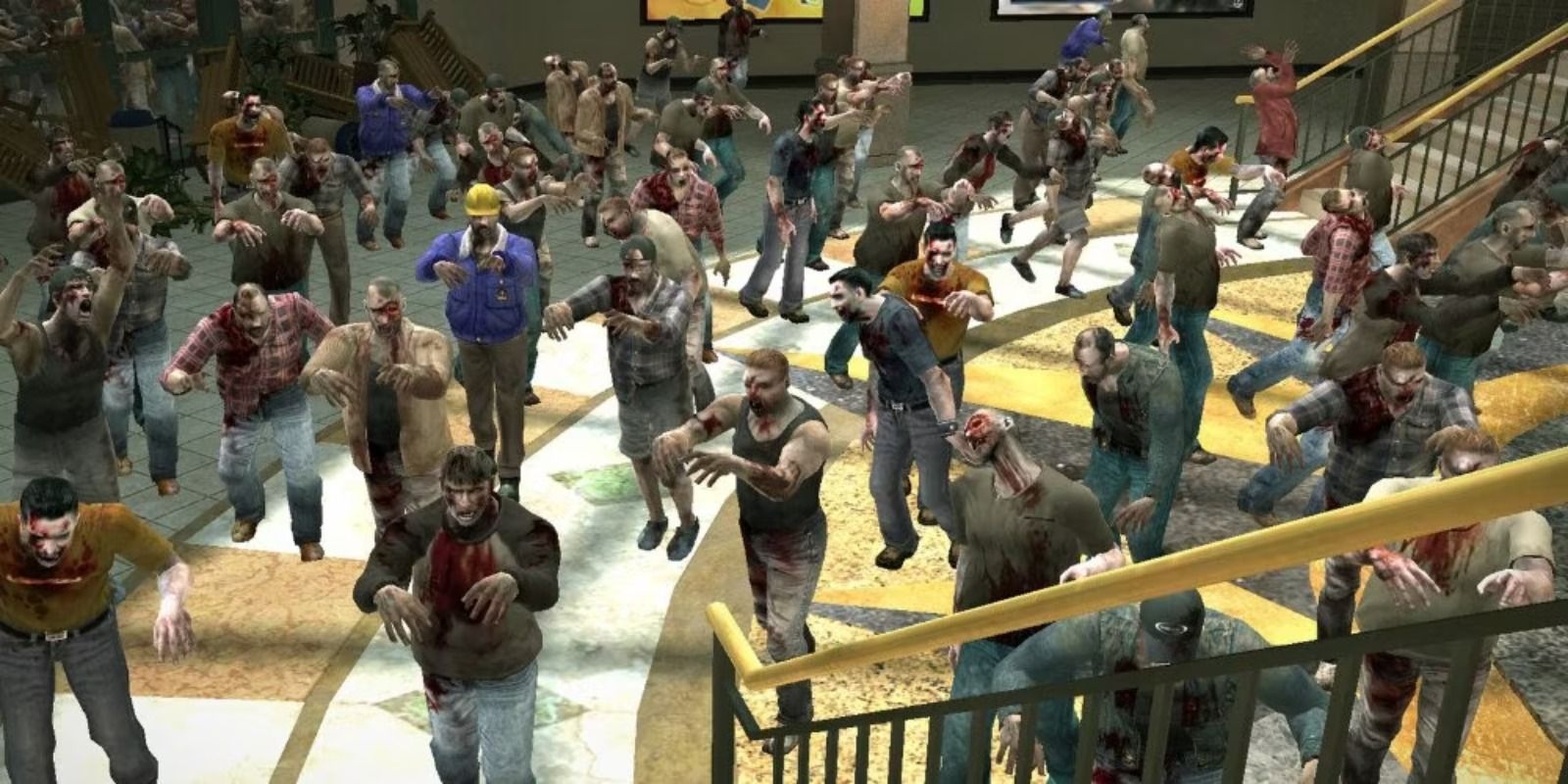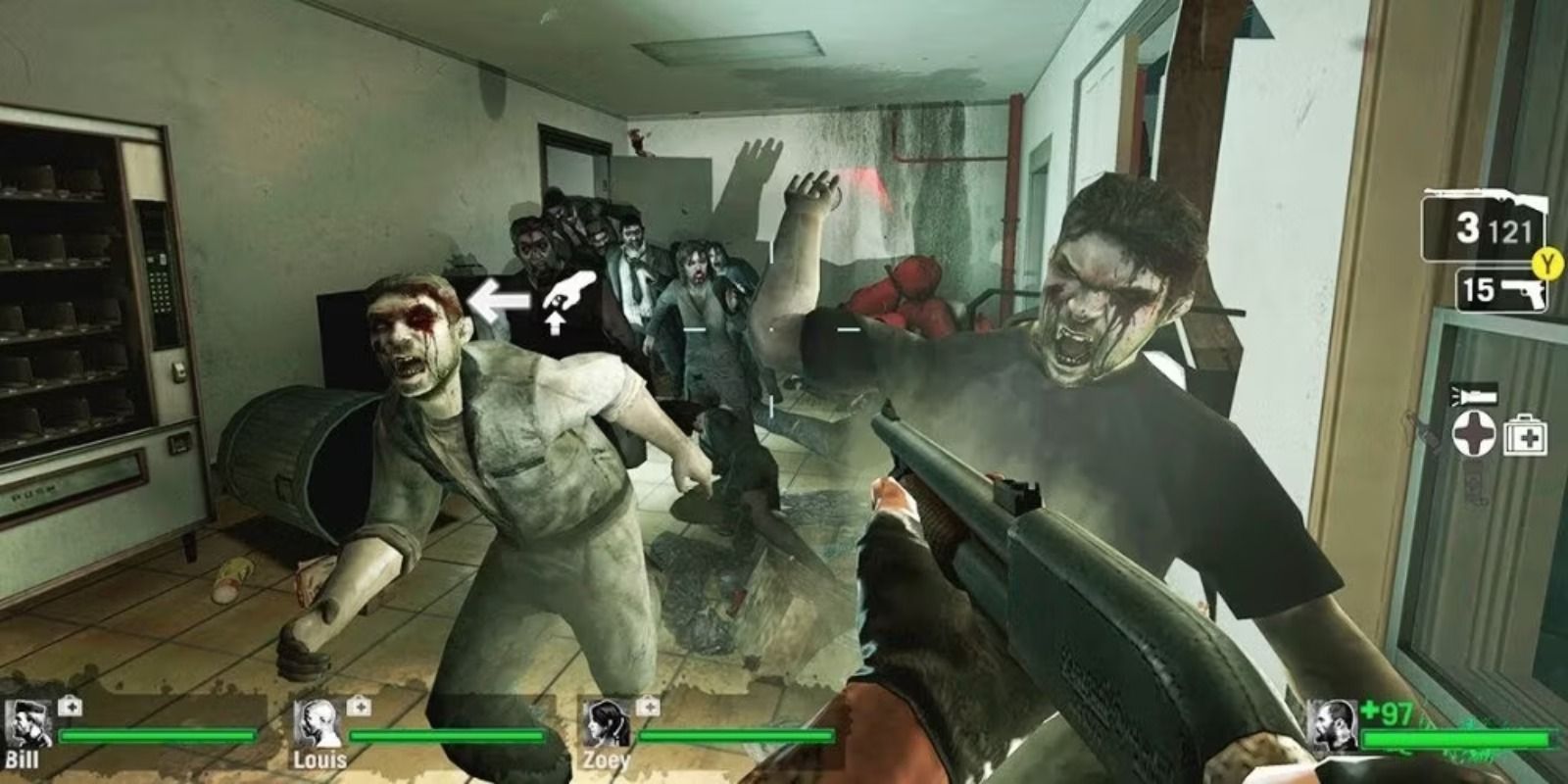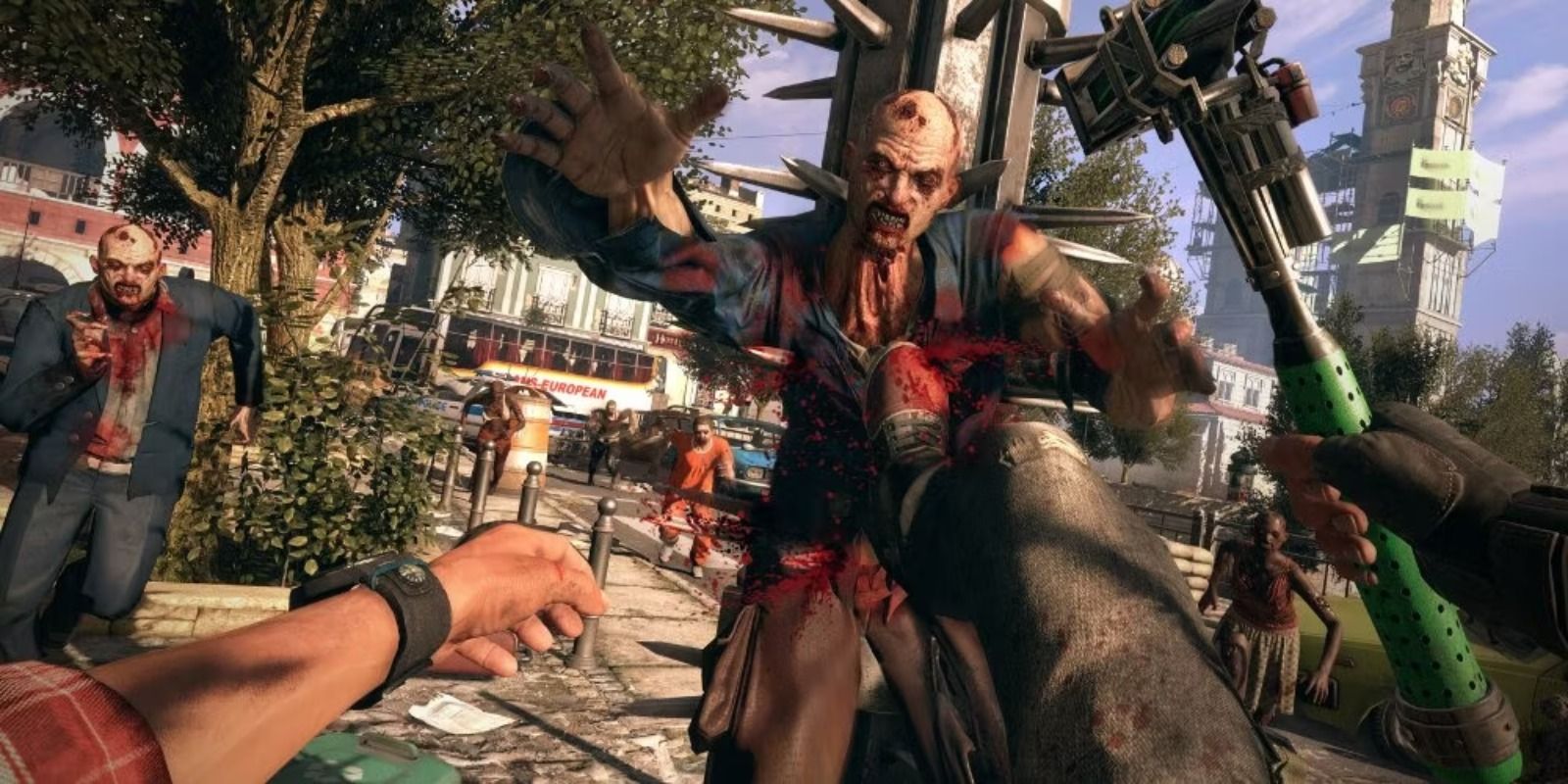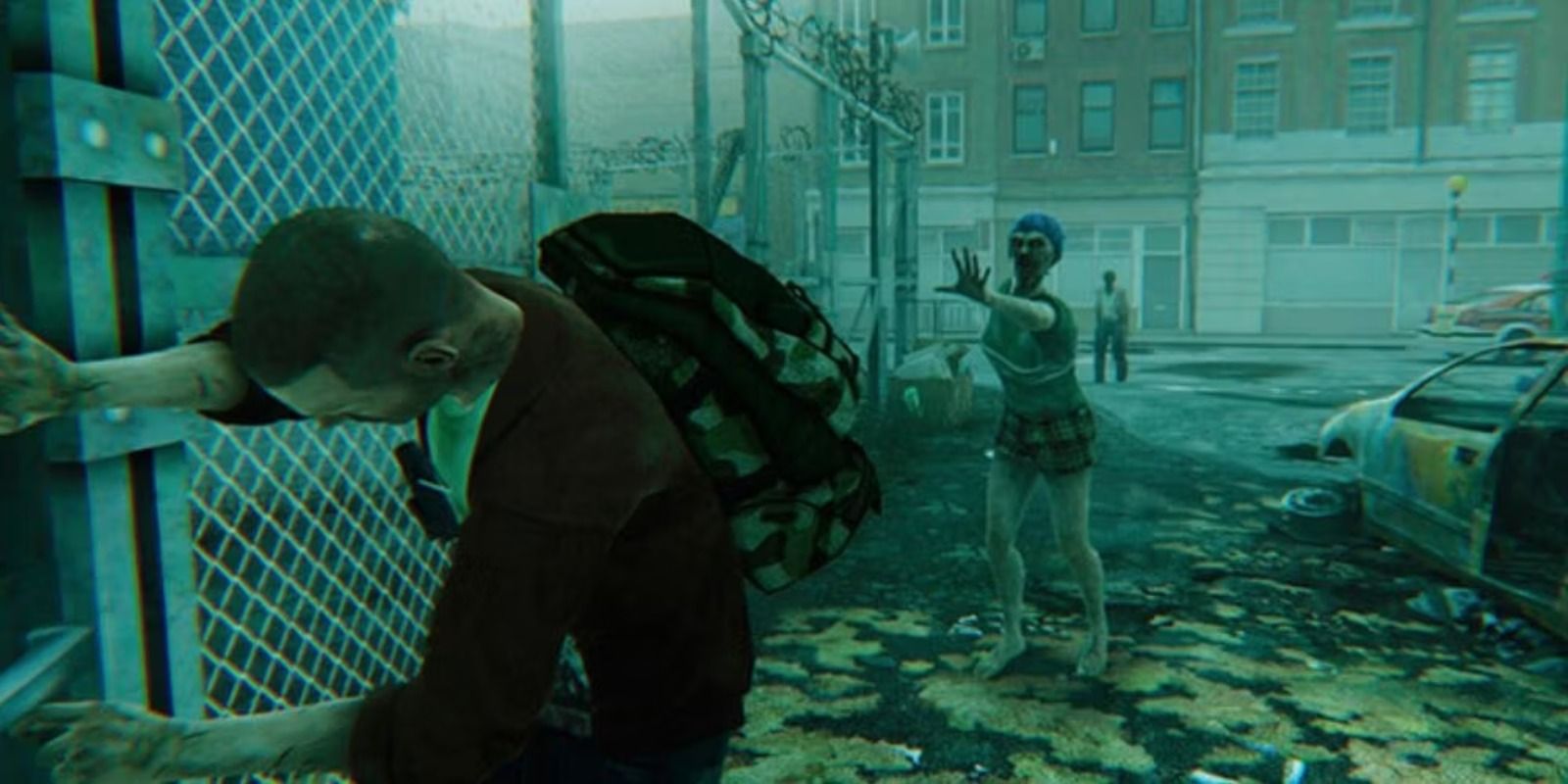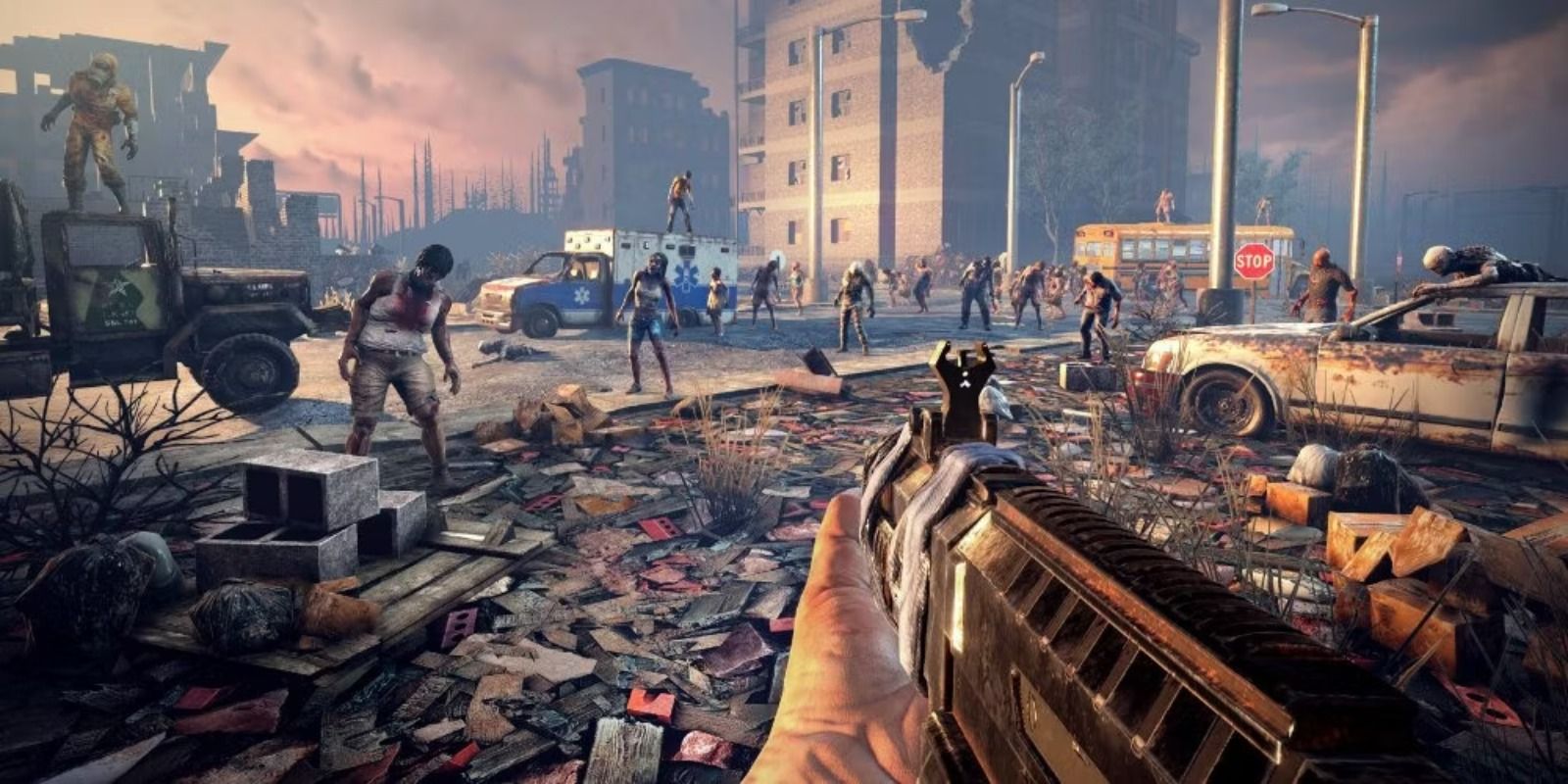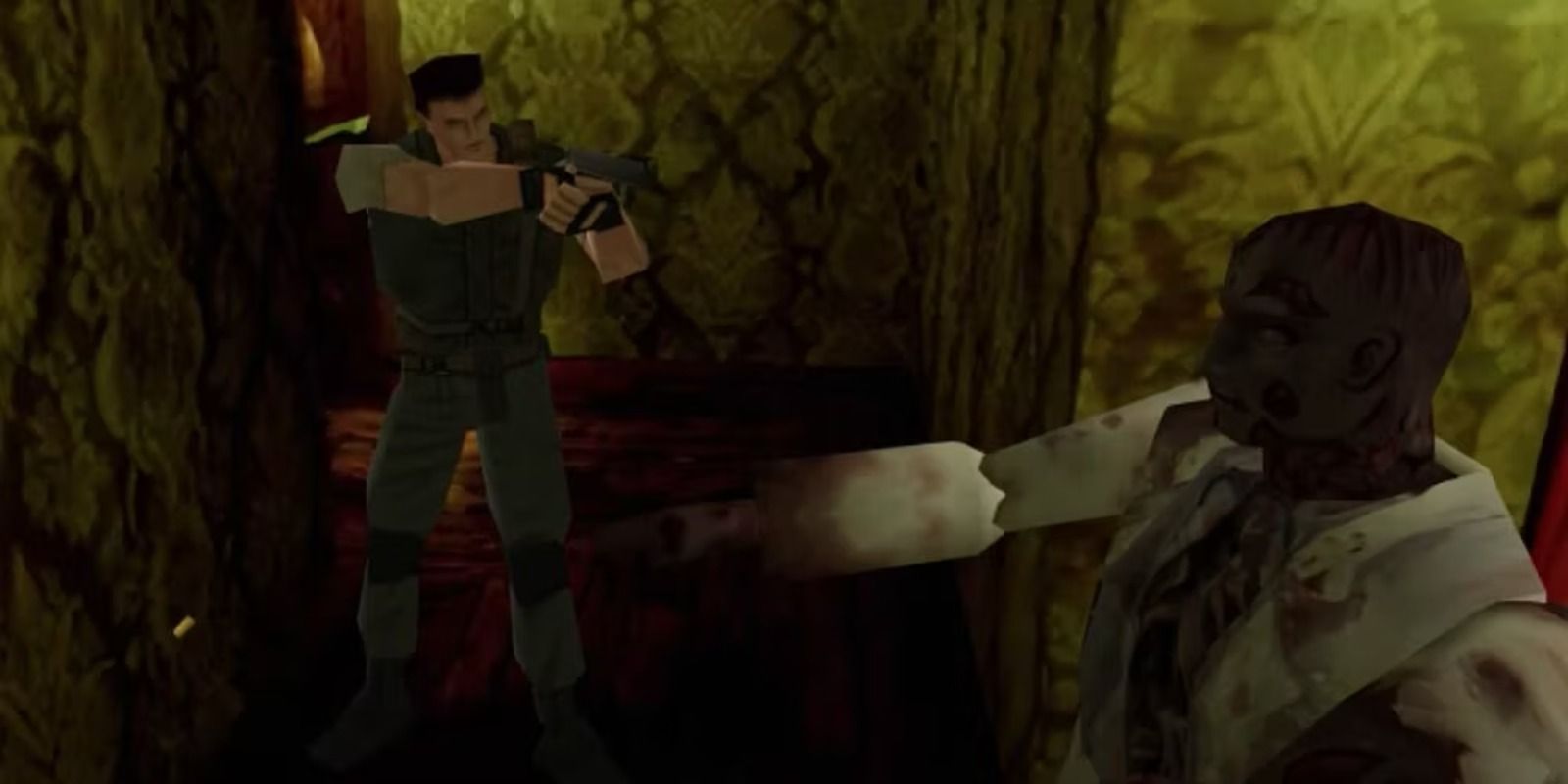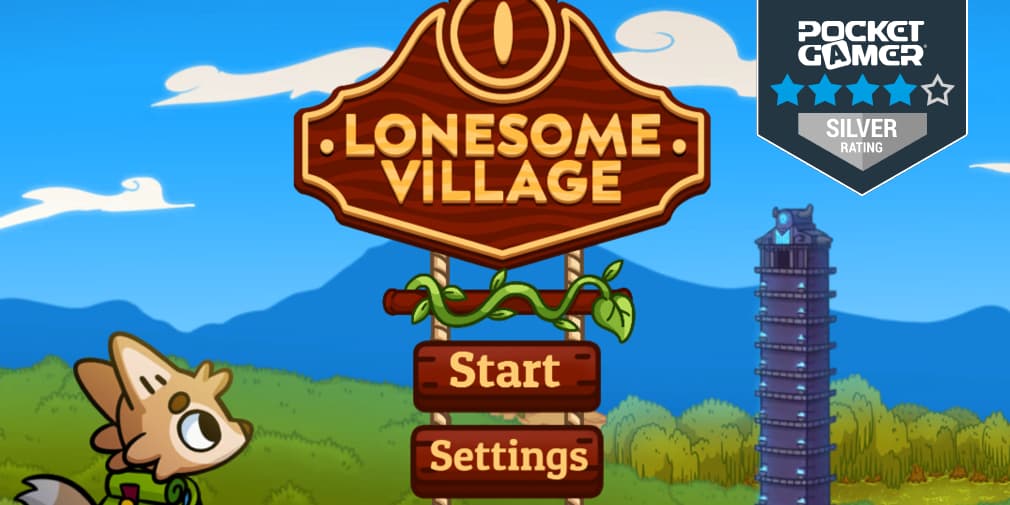Highlights
- Dead Rising: Immersive game with staggering number of zombies on screen and creative weapon-crafting mechanic.
- Left 4 Dead: Fast and relentless zombies create constant tension and terrifying hordes.
- Dying Light: Open-world zombie game with innovative parkour system and dynamic day/night mechanic.
Zombies have been an incredibly popular and instantly recognizable enemy archetype within video games for several decades. However, while the intense challenge of trying to survive against a horde of brain-hungry undead monsters has been successfully replicated in many genres, zombies have outstayed their welcome for some. The whole motif, in some gamers’ view, has become a little old, tiresome, and just played out.
10 Best 2D Zombie Games, Ranked
From Project Zomboid to Plants vs. Zombies, there are plenty of zombie games to check out of the 2D variety.
Thankfully, certain titles have managed to revive the zombie fascination, through a few unique and innovative decisions. While each of these games features zombies as we all know and (perhaps) love them, they also take risks with their enemy AI systems, level design, and general mechanics, breathing fresh air into these classic enemies. Here are some of the most creative zombie games ever made.
6 Dead Rising
A Staggering Amount Of Zombies On Screen At Once, And An Infinite Number Of Ways To Fight
- An iconic weapon-crafting mechanic can make the silliest items deadly.
- A zombie invasion on a scale never seen before.
Dead Rising is a pretty simple game on paper: simply explore a shopping mall crammed full of zombies and try to survive long enough to escape. What really made the game stand out from other survival titles, however, was just how many enemies could appear on-screen at once. Even today, developers have an extremely difficult time inserting more than a few complex AI enemies and characters on a screen at the same time, but Dead Rising managed to pull this off seemingly effortlessly. This went a long way to immerse players in the experience, making them feel like they’re truly surrounded no matter where they go.
Aside from the staggering number of zombies that could show up, Dead Rising also helped to popularize the goofier side of having zombies for enemies, specifically because of how slow and mindless they are. Frank is able to dress them up, hit them with a few golfballs, or even just mow them down with a fire extinguisher. The game’s creative approach to what constitutes a ‘weapon’ provides a fun and silly alternative to the traditional dark depiction of zombies.
5 Left 4 Dead
Rather Than Stumbling Around, The Zombies In Left 4 Dead Are Faster Than The Humans
- Defines the constant threat of existence in a zombie-riddled world.
- An atmospheric and high-octane shooter.
Left 4 Dead
- Released
- November 17, 2008
Everyone’s familiar with the classic slow “Romero” zombies who tend to waddle towards their prey, but Left 4 Dead did things a little differently, instead making them incredibly fast on their feet, to the point where not even the human characters can outrun them while sprinting. This added an extra level of tension that had only rarely been seen in zombie games before, and it also encouraged players to stick close to their teammates if they wanted any chance of surviving to the end of a level.
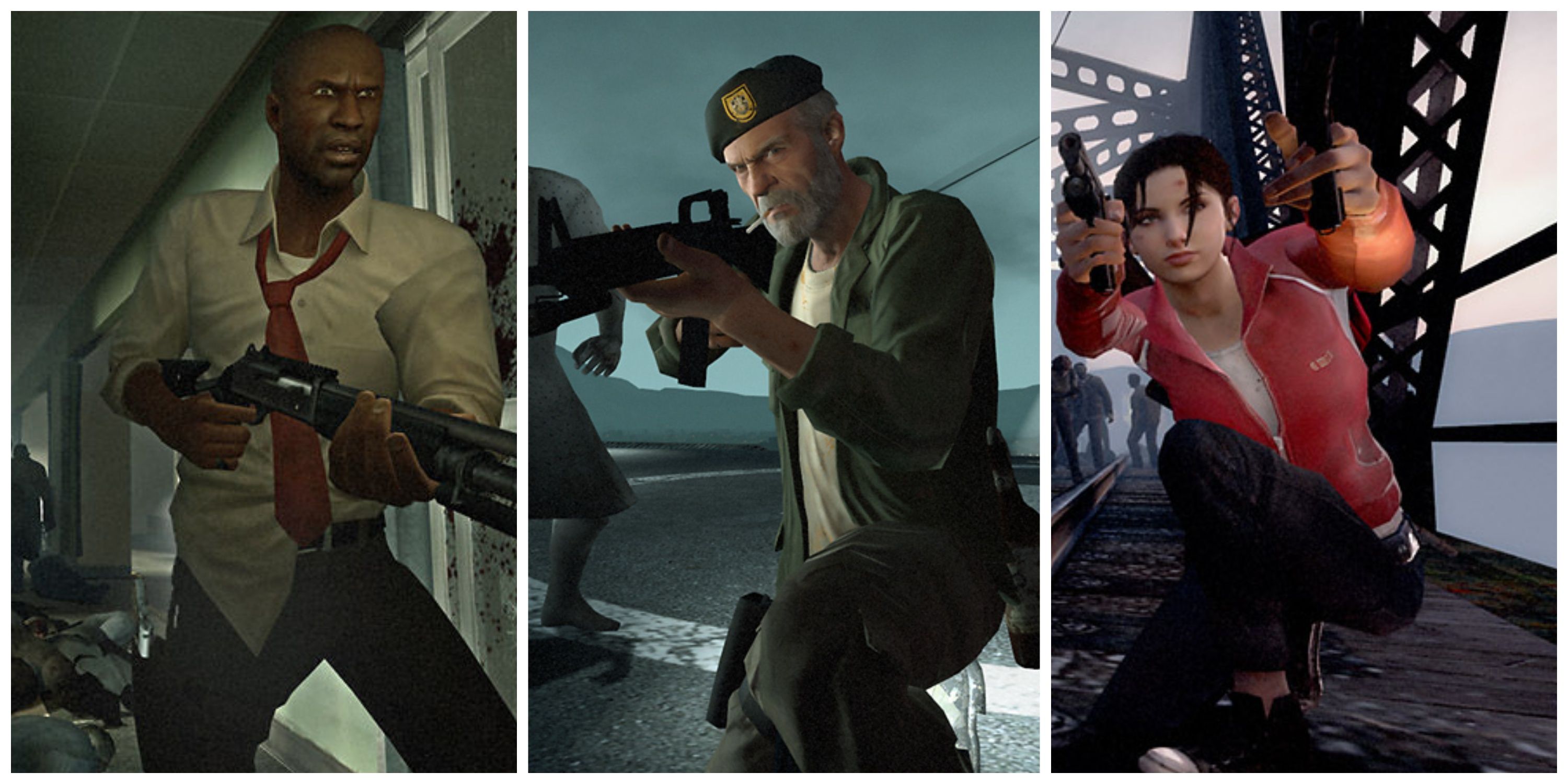
6 Things Left 4 Dead Does Better Than Its Sequel
The original team-based zombie shooter, Left 4 Dead, does a lot of things better than its sequel.
Left 4 Dead was the game that made the idea of the “horde” absolutely terrifying, especially since a simple loud noise could unleash a wave of deadly zombies onto a player, reminding people that there aren’t many monsters out there that are scarier than a running zombie.
4 Dying Light
Dying Light’s Parkour System Makes Its Open World Zombie Experience Fun And Engaging
- A sophisticated parkour system revolutionized open-world exploration.
- The day/night mechanic makes the game’s grim world seem even more dynamic.
Dying Light
- Released
- January 27, 2015
While the idea of an open-world zombie game sounded interesting on paper, many developers were a little hesitant to actually try making such a game. That is, until Techland absolutely perfected it with Dying Light in 2015. Considering that the streets were filled with zombies (especially after the sun goes down), Techland decided to integrate a parkour movement system into the gameplay that allowed players to scale buildings and leap through windows at lightning speed. It was something that hadn’t really been used in a first person game since the fantastic Mirror’s Edge.
The decision to include a dynamic day and night system also negated the issue of zombies always obstructing certain areas. Instead, players would have a little more leeway to gather supplies, set traps, and move between objectives during the day. When night hit, though, the zombies started gathering in larger groups and became much more vicious in their attacks. Dying Light proved that merging zombies with an open world environment was possible, when just a few clever mechanics and systems were thrown into the mix.
3 ZombiU
Players Became Members Of The Undead Horde When They Died In ZombiU
- It’s not unusual for a character in zombie-related media to be claimed by rhe undead legions, but ZombiU presents a unique take on the concept.
- Asymmetrical multiplayer lends an intriguing twist to proceedings.
ZombiU
- Released
- November 18, 2012
- Developer(s)
- Ubisoft Montpellier
As it was released as a launch title for the poorly received Wii U, ZombiU unfortunately didn’t get quite the attention it deserved (a sad fate that befalls some games every year), because it’s without a doubt one of the most creative and interesting zombie games ever made. The first-person survival gameplay may seem fairly basic, but where the game really becomes something else entirely is when the player dies. Upon meeting their demise, the player’s character will actually become a zombie, with them then taking control of an entirely different survivor.
This then creates a dilemma where they can risk their life hunting down their equipment, or leave it all behind to start anew. Permadeath is often a bit of a touchy mechanic, since it’s often seen as an incredibly brutal mechanic in games, but the idea of actually turning a character into a member of the enemy force after they die was incredibly innovative. The original Wii U release also featured asymmetrical multiplayer in the King of Zombies mode, in which one player holds the GamePad and directs zombie minions towards the other while their opponent must fight them off while pursuing their objectives. The game was later re-released elsewhere as Zombi, and while it lacked the multiplayer, it was still quite the zombie novelty.
2 7 Days To Die
Eerily Immersive Thanks To Its Unforgiving Survival Mechanics
- Survival mechanics lend a grim realism to the experience.
- Effective implementation of base building too.
7 Days to Die
- Released
- December 13, 2013
- Developer(s)
- The Fun Pimps
There’s arguably never been a zombie game as immersive and intense in its core gameplay as 7 Days to Die. Players can’t just hack and slash their way through zombies or hide away in a fortified bunker in this game, since they will have to keep track of their hunger, thirst, and health too. This encourages them to search their environment to find any supplies that can aid in survival. There are over 60 different types of zombies roaming its horrifying world, which also means that every expedition is extremely unpredictable.
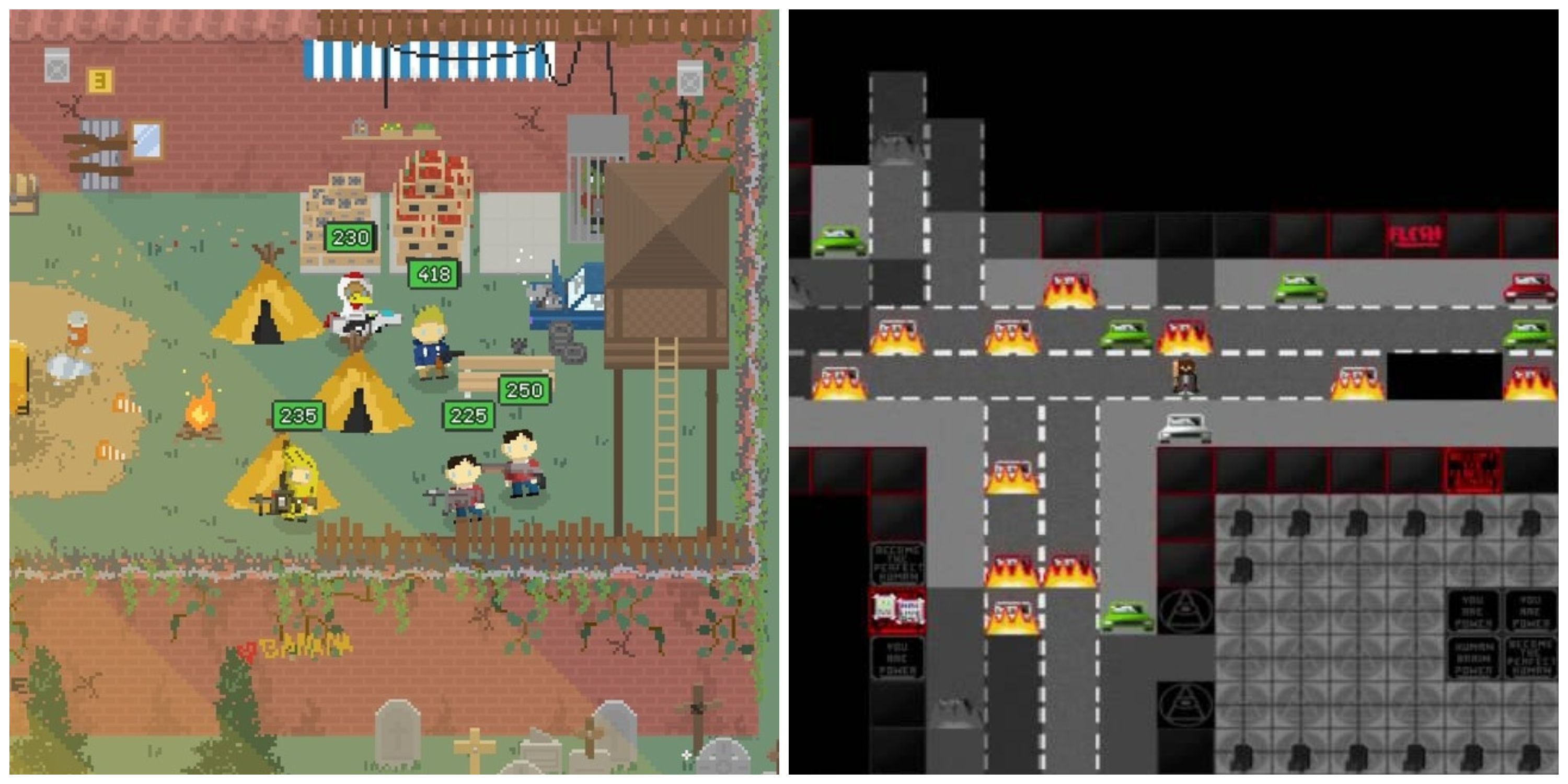
5 Best Zombie Roguelike Games, Ranked
Zombies and Roguelikes are a perfect blend of genres that just makes sense.
Building is also a huge part of the gameplay loop, with players having access to numerous tools and pieces of equipment that can help them make a small base to return to. Even these aren’t truly safe places, however, as they can easily get overrun by the zombie horde if proper care isn’t taken. A lot of zombie games often feel like they are a little unrealistic because the player can just become that powerful, but 7 Days to Die creates a much more oppressive atmosphere through its unforgiving survival mechanics. This is a huge reason why it has become so popular.
1 Resident Evil
Made Zombies Scary Again Through Its Claustrophobic Level Design
- An enormous influence on the developing survival horror genre.
- Its static camera angles, note collecting and eerie atmosphere made it an icon.
Believe it or not, zombies had begun stagnating in popularity during the wonderful decade for video games that was the 1990s. Their novelty had begun wearing off, and a lot of people simply didn’t view them as scary any longer, but Resident Evil created a massive re-surge in interest thanks to its clever level design and camera angles. Aside from the main hall, the rest of the Spencer Mansion is made up of small and narrow hallways which gives the player no room to maneuver around the zombies, slow lumbering creatures as they may be.
Capcom also intentionally used the restricted camera angles to heighten fear in the player, often giving them an awkward view of their character that made moving around the environment a lot trickier and more intense. In the later remake, the whole mechanic of zombies coming back to life if they weren’t burned (the fearsome Crimson Heads) also made them seem that much scarier, while also emphasizing the whole “undead” aspect. It’s extremely unlikely that zombie games would be anywhere near as popular today if not for the original Resident Evil and the many ways it managed to emphasize the true horror of these horrific monsters.
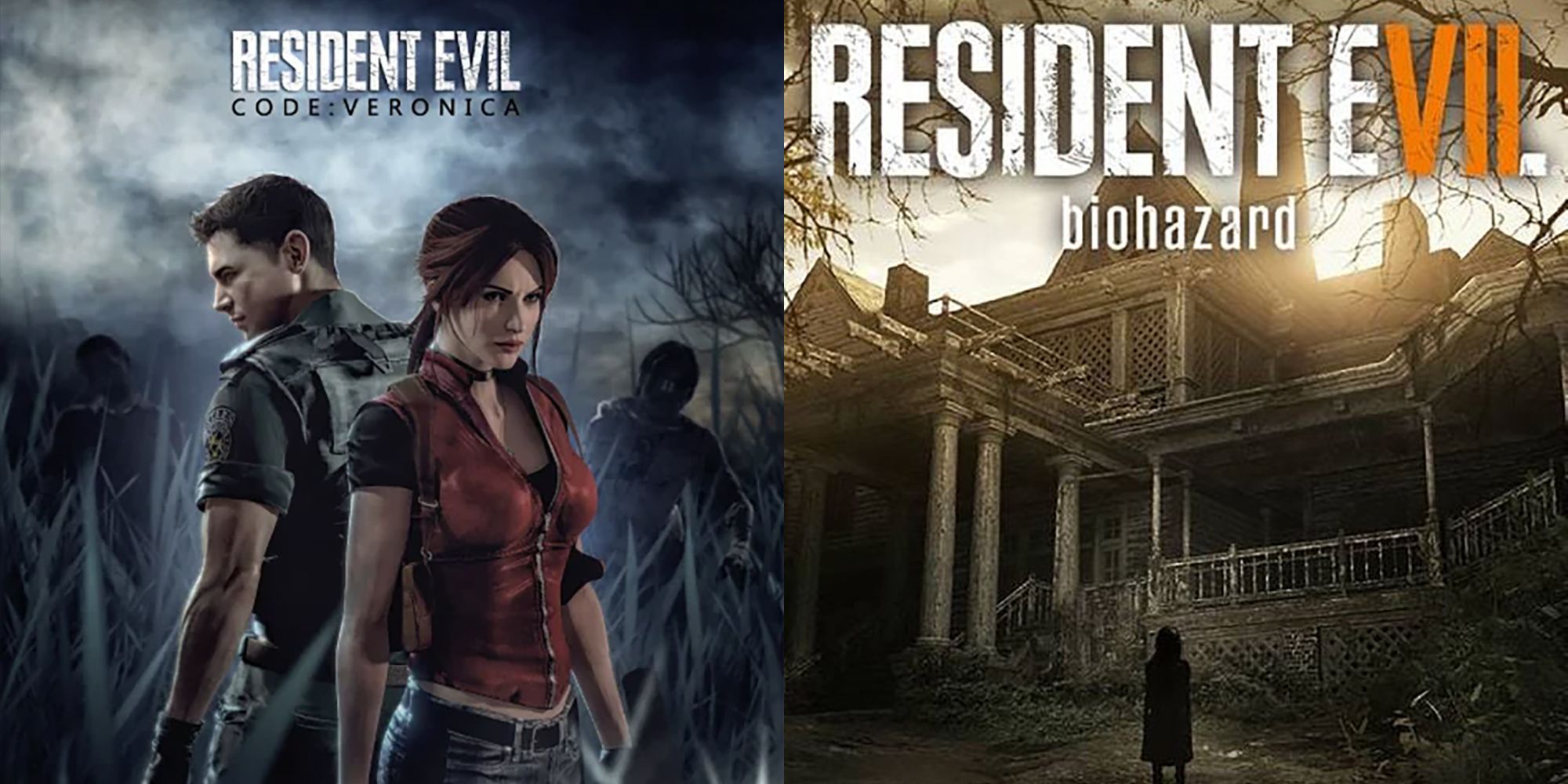
8 Hardest Resident Evil Games, Ranked
Throughout the entire Resident Evil franchise, there exist some games in the series that are far harder than others for a multitude of reasons.

